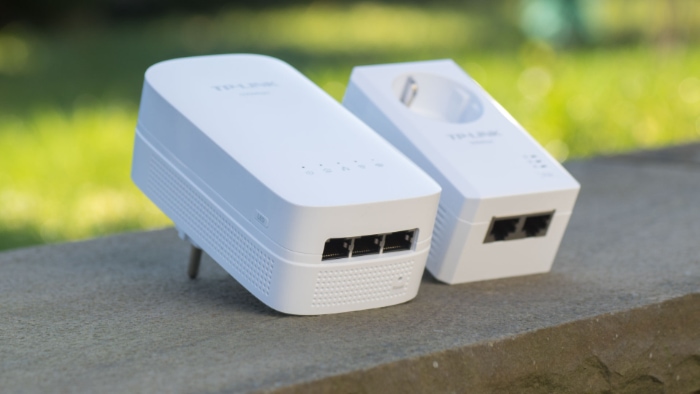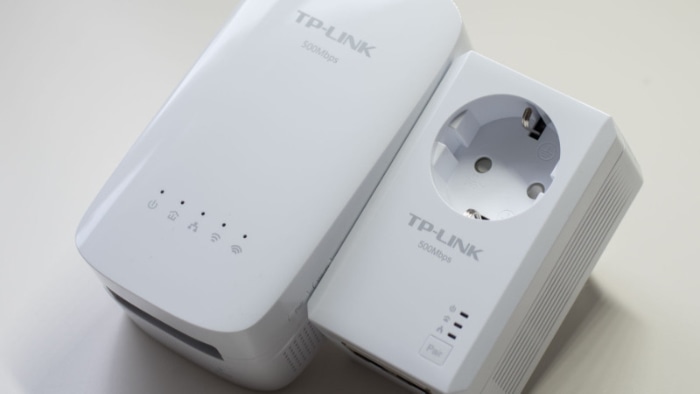Powerline Adapters: Connectivity Made Simple

Modern homes brim with devices craving stable internet connections, from smart TVs and gaming consoles to work-from-home setups that demand relentless data flow. Yet, achieving consistent connectivity across every corner of a home can be a challenge, particularly in spaces Wi-Fi struggles to reach.
Enter powerline adapters, a solution that combines the reliability of a wired network with the convenience of not having to run new cables throughout your living space.
The Basics of Powerline Networking
In the realm of home networking, achieving seamless connectivity can sometimes feel like a juggling act. As we introduce more devices into our homes, from streaming devices to smart home gadgets, the demand for a stable internet connection increases.
Powerline networking emerges as a clever solution to these connectivity challenges, utilizing the electrical wiring already present in your home.
What is a Powerline Adapter?
A powerline adapter is a small device that uses the electrical wiring in your house to transmit internet signals. This approach allows you to extend your network coverage without the need for additional Ethernet cables or the struggle with Wi-Fi dead zones.
Typically, these adapters come in pairs, with one unit connecting to your router and another plugged into an outlet where you need internet access.
Integration into Home Networking Solutions
Powerline adapters are a part of a broader array of networking solutions available for home use. They fill a niche for those who need a more reliable connection than Wi-Fi can provide in certain parts of their home but want to avoid the hassle and expense of running new Ethernet cables.
These adapters are particularly useful in structures where Wi-Fi signals may be weakened by thick walls or floors.
Comparison with Wi-Fi Extenders and Ethernet Cables
While powerline adapters, Wi-Fi extenders, and Ethernet cables all aim to solve the issue of providing internet access throughout a home, they do so in different ways. Wi-Fi extenders increase the coverage of your Wi-Fi network by rebroadcasting the signal, which can sometimes result in decreased speed.
Ethernet cables, offering the most stable and high-speed connection, require physical installation that can be impractical or unsightly. Powerline adapters offer a middle ground, leveraging your home’s electrical circuit to extend your network, combining the convenience of Wi-Fi extenders with the stability closer to that of a direct Ethernet connection.
How Powerline Adapters Work
Powerline adapters harness the electrical wiring in your home to create a network, transforming every power socket into a potential internet access point.
Underlying Technology Explained
At the heart of powerline networking lies the ability to superimpose internet data signals onto the existing electrical wiring. This technology employs advanced modulation techniques to differentiate between the electrical current that powers devices and the data signals for internet connectivity.
As a result, your home’s electrical circuit doubles as a high-speed digital network, allowing for data transmission alongside electrical power.
The Process from Plugging In to Data Transmission
- Connecting to the Router: The journey begins with one powerline adapter being connected to your internet router via an Ethernet cable. This adapter then plugs into a power outlet, effectively turning your entire electrical wiring into a network cable.
- Expanding the Network: You plug a second adapter into any other outlet in your home where you need internet access. This could be near a desktop computer, a gaming console, or a smart TV. The second adapter captures the data signal circulating through the electrical wiring and converts it back into a usable Ethernet or Wi-Fi connection for your device.
- Pairing and Security: For the system to work securely, the adapters must recognize each other. This is often achieved through a simple pairing process, ensuring that your data signals are encrypted and cannot be accessed by outsiders tapping into the same electrical grid.
Utilizing Electrical Wiring for Data Transmission
The innovative aspect of powerline technology is its use of existing infrastructure, negating the need to install new wiring specifically for internet connectivity. This approach not only simplifies the process of extending your network but also reduces clutter and the expense associated with traditional wired or extended Wi-Fi networks.
Despite sharing the same wiring, the technologies ensure that internet data and electrical power do not interfere with each other, maintaining the integrity of both systems.
Setting Up Powerline Adapters

Installing powerline adapters in your home is a straightforward process that can significantly enhance your internet connectivity. This technology allows for the expansion of your network into areas that previously had weak or no Wi-Fi signal, without the complexity of running new cables.
Required Components for a Powerline Network
To establish a powerline network, you need at least two powerline adapters. Most kits come with two adapters, but you can add more to extend your network to additional rooms.
Each adapter must be connected to an electrical outlet, and at least one will need a direct connection to your router via an Ethernet cable. It’s also important to ensure that the adapters you choose are compatible with your home’s electrical wiring and with each other if they are of different brands or models.
Tips for Optimal Placement and Usage
- Avoid plugging powerline adapters into power strips or extension cords, as this can interfere with the network signal.
- For the best performance, use outlets that are directly wired to your home’s electrical system.
- Keep in mind that the distance and the quality of your home’s electrical wiring can affect the speed and stability of your powerline network.
Setting up powerline adapters is a simple way to extend your internet connectivity without the drawbacks of weak signals or the need to install additional wiring. With just a few steps, you can enjoy stable and fast internet access in every corner of your home.
Advantages of Using Powerline Adapters
Powerline adapters offer a unique blend of convenience and reliability for home networking. By capitalizing on the existing electrical wiring in your home, they present an innovative solution to common connectivity issues.
Improved Connectivity in Hard-to-Reach Areas
One of the standout features of powerline adapters is their ability to provide stable internet access in parts of the home that traditional Wi-Fi struggles to reach. Whether it’s a basement, an attic room, or a garden office, these adapters ensure that the signal strength is not compromised by physical barriers like walls and floors.
This capability is particularly beneficial for larger homes or buildings made from materials that obstruct Wi-Fi signals.
Stability and Speed
Compared to Wi-Fi, which can be susceptible to interference from other wireless signals and devices, powerline networking offers a more stable connection. The direct link created through the electrical wiring minimizes latency and provides a consistent internet speed, which is crucial for activities that demand a reliable connection, such as video conferencing, streaming high-definition content, and online gaming.
Ease of Installation and Use
Setting up powerline adapters is straightforward, requiring no specialized tools or significant technical knowledge. The plug-and-play nature of these devices means you can establish a network connection quickly, without the need to drill holes or run Ethernet cables through your home.
This simplicity extends to their maintenance as well, with minimal setup changes needed once the network is operational.
Versatility for Various Applications
Powerline adapters are versatile, supporting a wide range of uses. They can enhance the home entertainment experience by providing a stable connection for smart TVs and gaming consoles.
They’re also useful in home offices, where a reliable internet connection is essential. Additionally, these adapters can support the integration of smart home devices, ensuring that your entire ecosystem of gadgets remains interconnected and functional.
Cost-Effectiveness
Compared to the expense and labor involved in wiring a home with additional Ethernet cables or enhancing Wi-Fi coverage with multiple extenders, powerline adapters offer a cost-effective alternative. By using the existing electrical infrastructure, they eliminate the need for extensive modifications to your home’s physical layout or significant investments in networking equipment.
Limitations and Considerations
While powerline adapters offer a unique and effective solution for extending home networks, there are certain limitations and considerations to be aware of.
Electrical Circuit Requirements
The effectiveness of powerline adapters largely depends on the condition and layout of a home’s electrical wiring. For optimal performance, both adapters should ideally be on the same electrical circuit.
Homes with older wiring or complex circuit layouts may experience reduced speeds or connectivity issues. It’s also important to note that using these adapters in power strips or surge protectors can interfere with the network signal.
Compatibility with Home Networks
While powerline adapters are designed to be compatible with most home networks, there can be exceptions. Ensuring that your existing network equipment (like routers and modems) is compatible with the powerline technology you choose is crucial.
Additionally, different brands and models of adapters may have varying features and capabilities, so selecting products that meet your specific networking requirements is important.
Potential Interference
Like any networking technology, powerline adapters can be susceptible to interference. Sources of interference within a home can include large electrical appliances, dimmer switches, and other devices that generate electrical noise.
This interference can potentially reduce the speed and reliability of your powerline network. However, many modern adapters are equipped with filters and technologies to minimize such disruptions.
Security Considerations
Security is a key concern in any home network, and powerline networking is no exception. While powerline adapters encrypt data to protect against eavesdropping, it’s important to configure these settings correctly.
Users should ensure that all adapters in the network are securely paired and that the network is using the latest encryption standards to prevent unauthorized access.
Planning for Expansion
For those considering expanding their network in the future, it’s worth noting that adding more adapters can affect network performance. While powerline networks can typically support multiple adapters, the overall network speed may decrease as more devices share the bandwidth.
Planning your network layout and considering potential future needs can help mitigate these effects.
Conclusion
Powerline adapters emerge as a strategic and adaptable choice for home networking, cleverly merging the ease of wireless connections with the dependability of wired networks. These devices harness the electrical circuits already present in homes to extend internet access, presenting a straightforward solution for boosting connectivity in areas poorly served by Wi-Fi.
From enhancing signal stability and speed to the simplicity of their setup, powerline networking offers a robust alternative for improving internet experience across various household setups. Yet, acknowledging the considerations such as electrical wiring layout, interference, and security is vital for maximizing their effectiveness.
For individuals seeking to upgrade their online activities, from gaming and streaming to optimizing home office setups, powerline adapters offer a significant enhancement. By carefully evaluating their advantages and mindful planning around their limitations, users are well-positioned to transform their home internet landscape.



